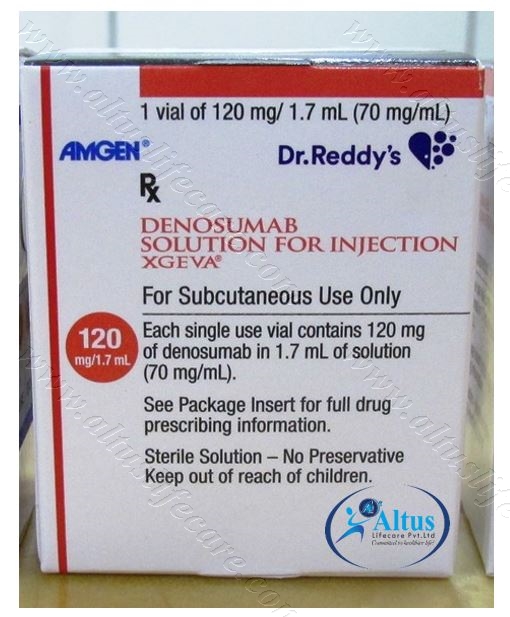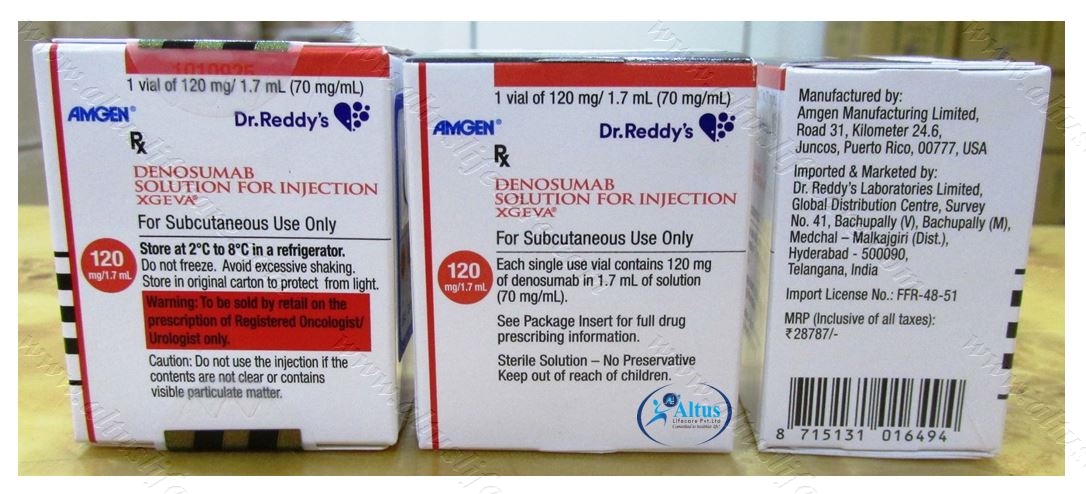No products in the cart.
Return To Shop
Menu
Categories
- Anti Malarial
- Dermal fillers
- Chemical Peels
- Nephrology Segment
- Kidney / Liver Care
- Anti Cancer
- Altus Product's
- Pharmaceutical Products
- Anti Fungal
- Hepatitis
- Beauty & Skin Care
- Asthma
- Modafinil
- Urology Segment
- Thyroid Care
- Armodafinil
- HIV Medicines
- Weight Loss
- Naltrexone
- Anti Emetic
- Neuropathic Pain
- Mens Health
- Hair Loss
- Pain Relief
- HCG Injections
- Quit Smoking
- Pharmaceutical Vaccine
- Best Selling Products
- Anti Viral
- Bimatoprost
- Antibiotics
- Women's Health
- Cetaphil
- Botulinum
- Diabetes
- Human Albumin
Wishlist
0
Sign in
Login
Register
- Anti-Cancer
- Armodafinil
- Bimatoprost
- Botulinum
- Dermal Fillers
- Hepatitis
- Mens-health
- Modafinil
- Naltrexone
- ANTI EMETIC
- Altus Product’s
- Anti Fungal
- Anti Malarial
- Anti Viral
- Antibiotics
- Asthma
- Beauty & Skin Care
- Cetaphil
- Chemical Peels
- Diabetes
- Hair Loss
- HCG Injections
- HIV Medicines
- Human Albumin
- Kidney / Liver Care
- Neuropathic Pain
- Pain Relief
- Pharmaceutical Products
- Pharmaceutical Vaccine
- Quit Smoking
- Thyroid Care
- Weight Loss
- Women’s Health
Shop and get discounts
Worldwide Shipping
Menu
Categories
- Anti Malarial
- Dermal fillers
- Chemical Peels
- Nephrology Segment
- Kidney / Liver Care
- Anti Cancer
- Altus Product's
- Pharmaceutical Products
- Anti Fungal
- Hepatitis
- Beauty & Skin Care
- Asthma
- Modafinil
- Urology Segment
- Thyroid Care
- Armodafinil
- HIV Medicines
- Weight Loss
- Naltrexone
- Anti Emetic
- Neuropathic Pain
- Mens Health
- Hair Loss
- Pain Relief
- HCG Injections
- Quit Smoking
- Pharmaceutical Vaccine
- Best Selling Products
- Anti Viral
- Bimatoprost
- Antibiotics
- Women's Health
- Cetaphil
- Botulinum
- Diabetes
- Human Albumin
Wishlist
0
0
Cart
$0.00
0
No products in the cart.
Return To Shop Shopping cart (0)
Subtotal: $0.00
Worldwide Shipping
Rated 4.00 out of 5 based on 1 customer rating
(1 customer review)
Compare
Please, enable Compare.
SKU: N/A
Category: Pharmaceutical Products
$441.56 – $2,142.86Price range: $441.56 through $2,142.86
Xgeva Solution for Injection (Denosumab 120mg) is a medicine used in the treatment of osteoporosis in postmenopausal women and in men at increased risk of fractures. It makes the bones strong and reduce the risk of fractures.
Have questions?
Our experts are ready to help.
Call : +91 9002 1002 33
Xgeva Solution for Injection (Denosumab 120mg)
| COUNTRY OF ORIGIN | India |
|---|---|
| DOSAGE FORM | Injection |
| GENERIC NAME | Denosumab |
| INDICATION | Osteoporosis |
| PACKAGING: | 1 Solution for Injection in 1 vial |
| MANUFACTURER | Dr Reddy’s Laboratories Ltd |
| COMPOSITION | Denosumab (120mg) |
PRODUCT INTRODUCTION
Xgeva Solution for Injection is a medicine used in the treatment of-osteoporosis in postmenopausal women and in men at increased risk of fractures. It makes the bones strong and reduce the risk of fractures.
Xgeva Injection is given by a healthcare professional and should not be self-administered. You should use it regularly and at the same time each day to get maximum benefit from it. Continue using it as recommended by your doctor and complete the dose even if you feel better. To make it more effective, take adequate amount of calcium and vitamin D supplements while on treatment with this medicine.
Some common side effects of this medicine include pain in extremity, musculoskeletal pain, nerve pain, urinary tract infection, constipation, and rash. Talk to your doctor if any of these side effects does not go away with time or get worse. Your doctor may help with ways to reduce or prevent these symptoms.
To make sure the medicine is safe for you, before taking it, let your doctor know of all the other medicines you are taking. It is important for pregnant and breastfeeding mothers to ask the advice of their doctors before using this medicine.
USES OF XGEVA INJECTION
- Osteoporosis
BENEFITS OF XGEVA INJECTION
In Osteoporosis
Osteoporosis is a common condition that weakens bones, making them fragile and more likely to break. It often occurs in women after menopause. This condition can be treated with bone-strengthening medicines. It slows down the rate at which bone is broken down in your body. This maintains bone density and reduces your risk of breaking a bone. The injection is given by a doctor or nurse and should not be self-administered.
You can help improve the strength of your bones by doing regular exercise (especially weight-bearing exercise), eating healthy foods containing calcium and Vitamin D and reducing your consumption of alcohol and tobacco. Supplements of calcium and Vitamin D3 are also effective.
You can help improve the strength of your bones by doing regular exercise (especially weight-bearing exercise), eating healthy foods containing calcium and Vitamin D and reducing your consumption of alcohol and tobacco. Supplements of calcium and Vitamin D3 are also effective.
“Denosumab: A Promising Option in Osteoporosis Management”
Denosumab is gaining recognition as a valuable tool in the treatment of-osteoporosis. This blog post explores what denosumab is, how it works, and why it has become a promising option for individuals looking to strengthen their bones and reduce the risk of fractures. Whether you’re already familiar with denosumab or just starting to learn about it, this article provides valuable insights into this osteoporosis-medication.
Denosumab is a monoclonal antibody that targets a protein called RANK ligand (RANKL). RANKL plays a crucial role in bone metabolism by promoting the breakdown of bone tissue. By inhibiting RANKL, denosumab helps slow down bone resorption, leading to an increase in bone density and a reduced risk of fractures. This medication is administered as an injection every six months, making it a convenient option for many patients.
One of the notable advantages of denosumab is its effectiveness, particularly in individuals with a high risk of fracture or those who have not responded well to other osteoporosis treatments. It offers an excellent alternative for those who cannot tolerate other medications or are seeking a more straightforward dosing schedule. However, like all medications, denosumab does come with potential side effects and considerations, so discussing its use with a healthcare provider is essential.
This blog post will provide you with a deeper understanding of denosumab, its mechanism of action, clinical benefits, and possible side effects. Whether you’re researching treatment options for osteoporosis or simply curious about the latest advancements in bone health, denosumab’s role in osteoporosis management is worth exploring. Join us on this journey to discover how this medication is making a positive impact on bone health and overall well-being.
“Understanding Osteoporosis Medication: A Comprehensive Guide”
Osteoporosis is a common bone condition characterized by reduced bone density and increased vulnerability to fractures. While lifestyle changes, including a calcium-rich diet and weight-bearing exercises, are crucial for prevention, medication plays a vital role in the management of osteoporosis. In this comprehensive guide, we’ll explore the various osteoporosis-medications, their mechanisms of action, potential side effects, and how they contribute to maintaining strong and healthy bones.
Osteoporosis-medications are designed to address the underlying factors contributing to bone loss and fracture risk. They can be broadly categorized into two main types: antiresorptive medications and anabolic medications. Antiresorptive medications, such as bisphosphonates and denosumab, work by slowing down the breakdown of bone tissue. On the other hand, anabolic medications, like teriparatide, stimulate the formation of new bone. The choice of medication depends on factors such as a patient’s bone density, fracture risk, and underlying health conditions.
Each medication has its own set of potential side effects, which should be carefully considered when making treatment decisions. Common side effects of antiresorptive medications may include gastrointestinal discomfort, while anabolic medications can lead to nausea and dizziness. It’s essential to consult with a healthcare provider to determine the most suitable medication based on an individual’s specific needs and to monitor treatment effectiveness.
This guide will delve into the details of these medications, their benefits, potential drawbacks, and the importance of medication adherence in osteoporosis management. With the right medication and a holistic approach to bone health, individuals with osteoporosis can better maintain their bone density, reduce the risk of fractures, and enjoy an improved quality of life. Stay tuned to learn more about these essential tools in the fight against osteoporosis.
“Osteoporosis and Treatment Its Comprehensive Treatment: Building Stronger Bones”
Osteoporosis is a silent condition that affects millions of individuals worldwide, primarily women and the elderly. Often unnoticed until a fracture occurs, it can have a significant impact on one’s quality of life. However, osteoporosis is not a life sentence, and with the right knowledge and proactive measures, it can be managed effectively. In this blog post, we’ll delve into the world of osteoporosis, its risk factors, symptoms, and most importantly, its comprehensive treatment. We’ll explore the medications, lifestyle changes, and strategies that can help individuals build and maintain stronger bones, reducing the risk of fractures and enhancing overall bone health.
Osteoporosis treatment is multifaceted, and it begins with understanding your unique risk factors. Early detection through bone density testing allows healthcare providers to tailor a treatment plan. Medications like bisphosphonates, denosumab, and teriparatide work to increase bone density, strengthen bones, and lower the risk of fractures. However, they are just one part of the equation. A balanced diet rich in calcium and vitamin D, along with regular weight-bearing exercises, plays a pivotal role in preventing further bone loss.
The key to successful osteoporosis management lies in a holistic approach that combines medical intervention with a healthy lifestyle. By shedding light on the condition and exploring the multifaceted treatment strategies, this blog aims to empower individuals to take charge of their bone health, reduce the risk of fractures, and enjoy a fuller, more active life. Understanding osteoporosis and its comprehensive treatment is the first step towards building and maintaining stronger bones.
“A Comprehensive Guide to the Treatment of Osteoporosis”
Osteoporosis is a common bone condition that affects millions of people, primarily women, as they age. It’s characterized by the loss of bone density, which makes bones fragile and more susceptible to fractures. In this comprehensive guide, we will explore the various aspects of osteoporosis treatment, including medications, lifestyle changes, and the importance of early intervention. Whether you’ve recently been diagnosed with osteoporosis or are looking to maintain strong and healthy bones as you age, this blog post will provide you with valuable insights to better understand and manage this condition.
Osteoporosis treatment typically involves a multifaceted approach. Medications like bisphosphonates, denosumab, and teriparatide are prescribed to improve bone density and reduce the risk of fractures. These medications work by either slowing down bone resorption or stimulating the formation of new bone. However, medication is just one piece of the puzzle. Lifestyle changes, including a diet rich in calcium and vitamin D, weight-bearing exercises, and smoking cessation, are essential for preventing further bone loss and promoting overall bone health.
Early intervention is critical in osteoporosis management. The sooner the condition is diagnosed and treatment begins, the better the chances of preserving bone density and reducing the risk of debilitating fractures. Regular bone density testing and assessment of fracture risk are crucial components of proactive care.
This blog post will delve deeper into the various aspects of osteoporosis treatment, providing you with a comprehensive understanding of the available options, their benefits, and potential side effects. Whether you’re taking steps to prevent osteoporosis or actively managing the condition, the knowledge and strategies discussed here will empower you to take control of your bone health and live a full and active life.
SIDE EFFECTS
Most side effects do not require any medical attention and disappear as your body adjusts to the medicine. Consult your doctor if they persist or if you’re worried about them
Common side effects of Xgeva
- Musculoskeletal (bone, muscle or joint) pain
- Pain in extremities
- Nerve pain
- Constipation
- Rash
- Urinary tract infection
HOW TO USE
Your doctor or nurse will guide you how to use this medicine.
HOW XGEVA INJECTION WORKS
It is a monoclonal antibody. It binds to a protein that causes bone loss, thereby strengthening the bone and minimizing the risk of fractures.
SAFETY ADVICE


Alcohol
CAUTION
Caution is advised when consuming alcohol with Xgeva Injection. Please consult your doctor.

Pregnancy
UNSAFE
It is highly unsafe to use during pregnancy. Seek your doctor’s advice as studies on pregnant women and animals have shown significant harmful effects to the developing baby.

Breast feeding
SAFE IF PRESCRIBED
It is probably safe to use during breastfeeding. Limited human data suggests that the drug does not represent any significant risk to the baby.

Driving
SAFE
It does not usually affect your ability to drive.

Kidney
SAFE IF PRESCRIBED
It for Injection is safe to use in patients with kidney disease. No dose adjustment of Xgeva Injection is recommended.

Liver
SAFE IF PRESCRIBED
It is probably safe to use in patients with liver disease. Limited data available suggests that dose adjustment of Xgeva Injection may not be needed in these patients. Please consult your doctor.
WHAT IF YOU FORGET TO TAKE?
If you miss a dose of Xgeva Injection, please consult your doctor.
| Pack Size | 1 Vial/s, 2 Vial/s, 3 Vial/s, 5 Vial/s |
|---|
1 review for Xgeva Solution for Injection (Denosumab 120mg)
Add a review Cancel reply
Related products
Buy Alfacal Capsule (Alfacalcidol 0.25mcg / 1mcg)
From: $38.96Istavel 50mg Tablet (Sitagliptin 50mg)
From: $39.22Janumet 50mg-500mg Tablet
From: $110.00Apigat 5 Tablet | Apixaban 5mg
From: $41.03Istamet 50mg-1000mg Tablet
From: $34.81Eptus 50 Tablet (Eplerenone 50mg)
From: $66.23Atorva Tablet (Atorvastatin 40mg & 80mg)
From: $105.19People also bought
-
Benoquin 40 Cream | Monobenzone 40%
From: $154.77 - From: $38.38
- From: $40.05
-
Aziderm 10% Cream 15gm | Azelaic Acid 10%
From: $39.26
Our Services
Shipping
Shipping at Discounted Price
Money Returns
Return Within 30 Days
Secure Payment
Safe & Secure Payment
Support 24/7
Contact 24 Hours Day
Denosurel 120mg Injection (Den...
From: $428.57


Buy Tacrograf 0.25 Capsule (Ta...
From: $44.42
More
More
- Anti-Cancer
- Armodafinil
- Bimatoprost
- Botulinum
- Dermal Fillers
- Hepatitis
- Mens-health
- Modafinil
- Naltrexone
- ANTI EMETIC
- Altus Product’s
- Anti Fungal
- Anti Malarial
- Anti Viral
- Antibiotics
- Asthma
- Beauty & Skin Care
- Cetaphil
- Chemical Peels
- Diabetes
- Hair Loss
- HCG Injections
- HIV Medicines
- Human Albumin
- Kidney / Liver Care
- Neuropathic Pain
- Pain Relief
- Pharmaceutical Products
- Pharmaceutical Vaccine
- Quit Smoking
- Thyroid Care
- Weight Loss
- Women’s Health


















Aspyn (verified owner) –
“Exceptional product quality and lightning-fast shipping – a fantastic experience!”